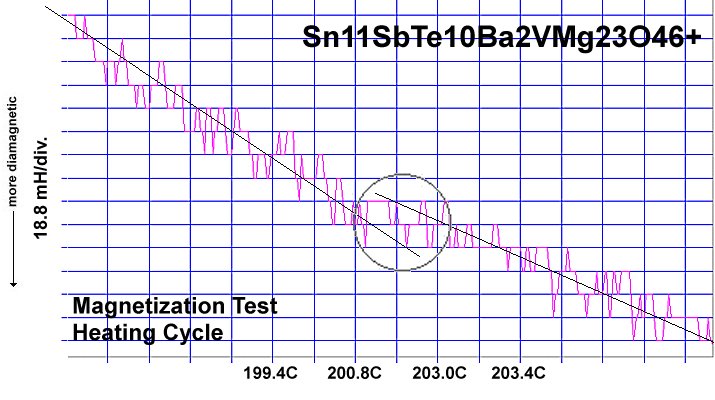
Milestone Superconductivity Above 200 Celsius
and a Barbequed Test Jig



Superconductors.ORG herein reports the world record for highest superconductor transition temperature has been advanced to over 200 Celsius. It was recently found that the most synergistic combination of elements that can establish superconductivity above 100C included tin, tellurium, barium, and vanadium within a magnesium-oxide matrix. That compound featured colossal permittivity (dielectric constant) in both the anion and cation layers. It was predicted that these same elements in a longer (Z+8)212 structure should have a critical transition temperature (Tc) near 200 Celsius. This has now been confirmed.
At page top is a magnetization plot of Sn11SbTe10Ba2VMg23O46+, which becomes the 46th room-temperature superconductor discovered to date[1]. Due to the extraordinary heat involved in testing this material, a miniature coil was used instead of Hall effect sensors (see above photo). Thus, readings are in millihenries. Note that a small amount of antimony (Sb) was also included to ensure there was sufficient resistance in the non-superconductive bulk to see a resistance change. Though the volume fraction of the target structure (shown lower left) is small, an unambiguous Meissner transition was observed near 202C (475K/395F).

|
Confirmation of 202C superconductivity also came in the below resistance tests. Immediately below, a "Mott transient" can be seen dropping the bulk resistance from 3.8 megohms to near zero ohms. As the Sn11SbTe10Ba2VMg23O46+ minority phase exits a superconductive state, the bound Cooper pairs are released to flood the bulk. This triggers a momentary resistance drop due to increased electron density in the surrounding host material. The gap in the trace spans 2 seconds. But the Mott transient itself occurs in under 250 milliseconds and, for that reason, is difficult to capture with logging software. To read more about Mott transients, click HERE. 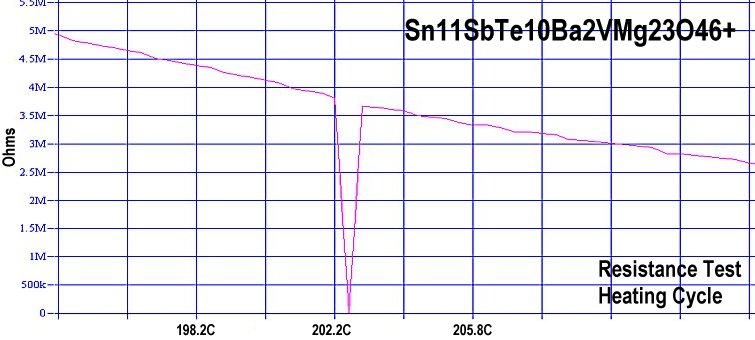
In the below two plots, a resistance shift can be seen near 202C in both heating and cooling tests. The delta is on the order of 3-4 kiloohms. Straight lines have been drawn through the noise to help illustrate the resistance shift at Tc. 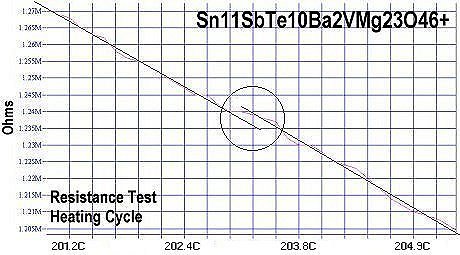
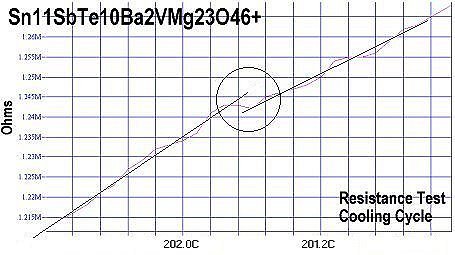 |
The dots within the below grid depict how Tc has advanced in the oxides through correspondingly higher planar weight ratios and higher dielectric constants (K). With the same PWR, the high Kappa compounds have transition temperatures 60-80 degrees greater than the low Kappa formulations. The newest formulations with vanadium(IV) in the anion are circled. Their positions above the curve are notably higher than the copper-oxides that featured a manganese(IV) anion.
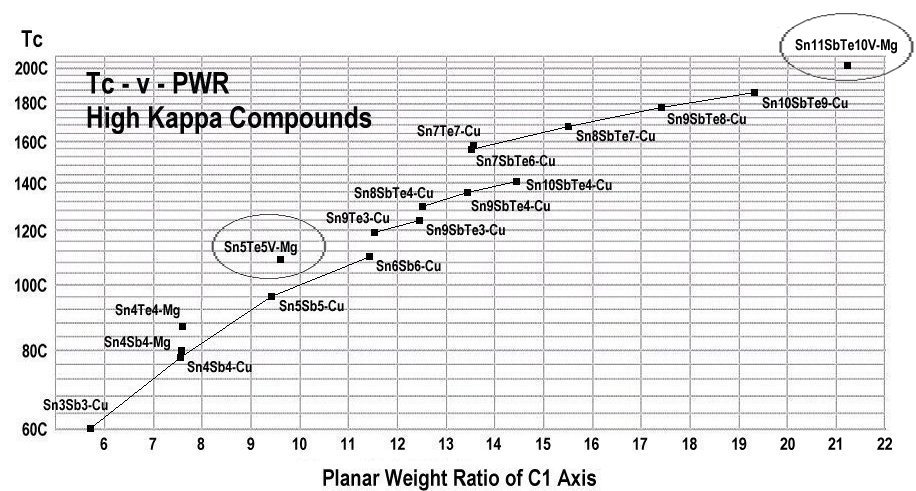
In order to maximize formation of such an elongated structure, this compound was synthesized using the layer cake method, as shown below. The pellet had approximately 100 interference layers. And, even using this layering technique, the volume fraction is low, requiring very sensitive test equipment.
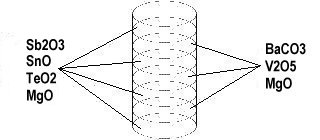
Stoichiometric ratios of the below chemicals were used for the ODD layers:
SnO 99.9% (Alfa Aesar) 5.44 grains...and the below for the EVEN layers.
BaCO3 99.95% (Alfa Aesar) 1.45 grains (decomposes to BaO during calcination, releasing the carbon as CO2) The chemical precursors were pelletized at 60,000 PSI and pre-sintered for
4 hours at 670C and 10 hours at 715C. Then sintering continued for 10 hours at 880C. Lastly the pellet was annealed for 10+ hours at 500C in flowing O2. Temperature was determined using an
Omega type "T" thermocouple and precision OP77 DC amplifier.
RESEARCH NOTE: The oxides are strongly hygroscopic. All tests should be performed immediately after annealing.
RE-PUBLICATION NOTICE: Elsevier Publishing, dba Elsevier Science, as well as Morris Communications, both print and broadcast divisions, are specifically prohibited from re-publishing any part of this news story.
E. Joe Eck
© 2017 Superconductors.ORG
All rights reserved.
1. For a complete list of the other 45, click HERE.
 BACK to "News" page at Superconductors.ORG
BACK to "News" page at Superconductors.ORG